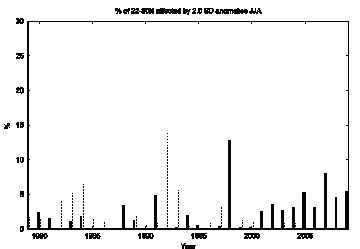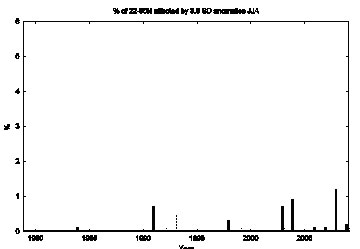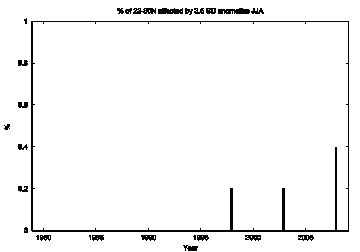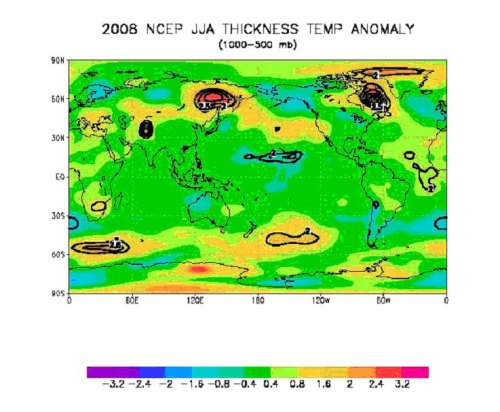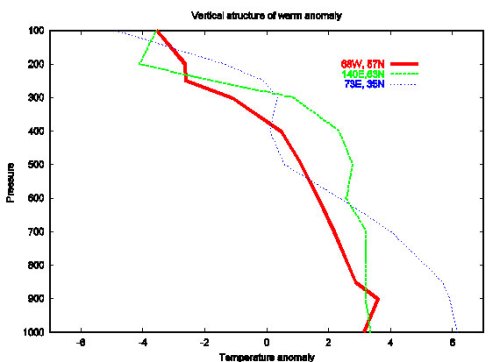Dan Hughes has asked a very good question!
Professor Pielke,
I have a candidate for Question of the Day.
The GCMs, and very likely all mathematical models of the transient behavior of the Earth’s Climate Systems, use approximations to the complete fundamental equations of physical phenomena and processes. This statement should not be taken to be a condemnation of ‘models of’ physical phenomena and processes in contrast to ‘use of’ the complete fundamental equations for all the physical phenomena and processes. The latter equations are seldom used in complex real-world applications.
I will focus on the mass and energy equations and associated phenomena and processes. Mass and energy are always strictly conserved, and this characteristic must be critically preserved through the formulation of the continuous equations, the discrete approximations, the numerical solution methods applied to the latter, and the temporal and spatial resolution employed at application time. At each step in this sequence the conservation of mass and energy assured in the previous steps can be un-done if extremely careful analysis is not carried out.
Here’s my question.
The changes in energy content and its distribution among the Earth’s systems expected to occur due to all the impacts by humans are relatively small; less than 10 W/m^2. This compares with the incident energy at the TOA of about 1370 W/m^2, and the few hundred W/m^2 of interest at the Earth’s surface.
Are the model equations for mass and energy conservation, including the all-important parameterizations, sufficiently precise to accurately capture to a sufficient degree of fidelity to the real-world the effects of this small change.
As an example, the expected changes represent less than 1%, more like 0.4%, of the incident energy at the TOA. At the Earth’s surface, the changes represent maybe 1.5% of the base-level energy flux. The changes in the total energy content ( mass * specific energy ) relative to the content at the base conditions, will be vanishingly small.
I strongly suspect that the Climate Science Community is relying heavily on the fact that at extremely long-range time scales, the radiative-equilibrium concept will obtain and that at this new state the effects of the very small changes will be plainly evident.
I also strongly suspect that the fidelity of the model equations, at all the steps mentioned above, will never be of sufficient fidelity to the real world to ‘predict’ the effects of such small changes over short time scales.
Thank you for your attention to this question and associated issues.
Dan
Here is my answer to this excellent question!
The climate models work hard to assure the conservation of the global average mass and kinetic energy. For example, the sum over the globe of the surface pressures at each grid point must be unchanged in order to assure mass conservation. In the context of mesoscale models I discuss these conservation requirements in Chapter 12 of
Pielke, R.A., Sr., 2002: Mesoscale meteorological modeling. 2nd Edition, Academic Press, San Diego, CA, 676 pp.
However, the conservation of mass and energy conservation on the global scale is a necessary condition for skillful simulations but it is not a sufficient condition for skillful multi-decadal climate predictions.
In my Chapter 12, I present a set of evaluation requirements which includes the comparison of the model predictions with the observations. In the context of forecasting the effect on climate metrics due to relatively small changes of radiative heating from human climate forcings, the only metric that (arguably) has shown any skill with respect to observations is the global average surface temperature and the upper ocean heat content multi-decadal linear trends, but even here, there has been disagreement in recent years (e.g. see and see). There is no regional skill on this time scale (e.g. see).
Thus, there remains quite a bit of effort to demonstrate that the multi-decadal global climate models are skillful forecast tools. I discuss the three types of uses of models in my post
What Are Climate Models? What Do They Do?
The mult-decadal climate models are effective tools to explore climate processes [ Process studies]. They are not, however, skillful tools for multi-decadal climate prediction [Forecasting].
Thanks again Dan Hughes for the opportunity to present your viewpoint.

